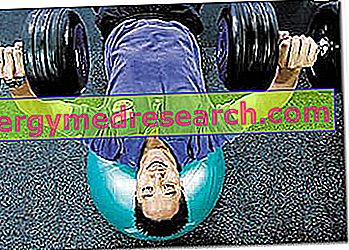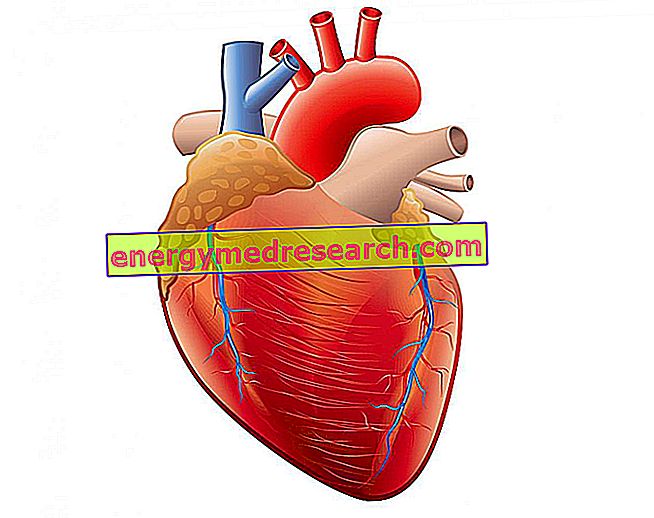By Dr. Nicola Sacchi - Author of the book: Drugs and doping in sport -
It should be pointed out immediately that training for athletic training is absolutely different from fitness or body building activities typically performed in a gym. It is essential that the athlete who is about to start a physical preparation in the gym, is aware of this and therefore can avoid using inappropriate and counterproductive work methods, but mistakenly believed to be useful since they are seen played by most fitness center users .

The athlete goes to a gym to condition his body in a specific way to improve in sports, and not to achieve an improvement in the aesthetic condition; therefore the training must develop with working methods that are adequate to achieve this goal.
Properly structured athletic training has several characteristics that distinguish it from fitness and body building training:
- Multiarticular exercises,
- Training in upright position,
- Free body training
- Rate of contraction,
- Gesture automatism.
Multiarticular exercises
Athletic training must condition the body to sporting gestures and must not simply contract muscles. This means that the selection of exercises must fall on movements that simulate generally developed athletic gestures, which always involve different articulations. Hitting a ball, grabbing an opponent, shooting etc. they are all movements that involve several muscles, so the exercises to be performed in the athletic preparation phase must necessarily be multiarticular and therefore develop through the activation of kinetic chains. By making this selection, of course, all isolation exercises so dear to physicists are excluded, but so useless to athletes as they are not suitable for improving sports gestures. Most of the movements performed in the sports field involve the joint activation of whole and sometimes different synergistic kinetic chains; for this reason isolation exercises are not useful to athletes: it is not possible to develop the coordination and synergism necessary to optimize a complex movement by fragmenting it into smaller parts: only the repeated execution of the gesture in its completeness and integrity allows to obtain the conditioning.
Training in an upright position
The practice of any sport, with the exception of swimming, cycling and canoeing, takes place in an upright position; therefore a specific athletic preparation must consider this fact with extreme importance, developing accordingly through the execution of exercises in this position also in the gym. Performing many seated exercises does not improve the stability necessary to support the standing position, as sitting or lying down it is not possible to train the muscles responsible for maintaining an upright posture. The coach or the athlete must remember that performing exercises from sitting or lying down - very practiced movements in gyms by fitness lovers, for their lesser engagement on postural muscles and for greater comfort - are not suitable for athletic training, which it must necessarily involve those aforementioned postural muscles, also used in the field, which are activated only if you work in an upright position.
Free body training
In most sports the body moves freely in space without the support of machinery or special tools that control and guide the gestures. It is therefore not very productive to train an athlete through the isotonic tools that currently fill the fitness centers. The exercises must be performed freely, so that the musculoskeletal system manages movement solely and totally. Any guide or mechanical support reduces physical effort and above all reduces the body's ability to control the gesture, it also accustoms the body to receive stress in a precise direction, while in the field the athlete is subjected to stresses and forces that act from all directions.
Performing leg extensions to improve football is a real nonsense!
And the reasons for this are many:
the player is not sitting when he kicks the ball,
the ball is not always in perfect line with the knee,
the foot during football is not always in perfect axis with the knee,
the body and the other leg contribute to coordinate the football and are not immobile during the gesture,
both the knee of the supporting leg and the knee that kicks the ball are subjected to lateral and torsional forces not reproduced by the leg extension,
calcium is a dry and explosive gesture that cannot be performed on a guide.
The few machines really useful to the athlete are those for training the traction muscles (back and biceps), that is the lat machine and the low pulley, and in some cases the cables when you want to perform specific movements - typical of a particular discipline sports - to improve specific strength.
The speed of contraction
The totality of the sports disciplines bases its performance on the execution of rapid and powerful movements, generated by fast contractions that produce explosive force.
At the base of sports gestures lies the athlete's ability to rapidly contract muscles and produce high degrees of strength, or to quickly repeat movements over time. The ability to rapidly activate the muscle fiber can be trained only by using fast contractions, consequently also the athletic preparation must be based on the execution of exercises with times of muscle contraction similar to those used in sport. In practice, even the exercises performed in the gym must be performed with contractions that can be fast and / or explosive and absolutely must not include slow and controlled movements as they are traditionally used in the gym.
The automatism of the gesture
Field movements, to be more effective, must be automated. In practice the athlete repeats the gesture thousands of times until the nervous system develops a preferential circuit for controlling that movement which allows it to be executed automatically, as if the body were a machine designed to generate such a gesture.
The automatism allows to express the maximum strength and precision, and saves energy, therefore optimizes the capacity of the body in the expression of that movement repeated over time.
Generally in the gym users are advised to feel the muscles working, to concentrate the fatigue on certain parts of the body, to control the movement to activate the muscle fibers, all this is the opposite of what the sportsman needs.
The athlete must also train in the gym trying to perform the proposed exercises with the greatest possible ease, through instinctive and not rationally controlled contractions. It is necessary to optimize the execution of the exercises to transfer the results to the field. The athlete does not think about how the muscles contract, he instinctively and automatically performs a gesture and must get used to working in this way even during the athletic preparation.
Structuring a workout according to these principles is essential to perform proper athletic preparation work. It is essential that the athlete understands how to use the weights to achieve performance improvements. The rumor that "weightlifting slows athletes", and is therefore an activity unsuitable for them, is true only if weights are used as in body building; the appropriate use of overloads, on the other hand, guarantees an improvement in the sporting gesture and prevents injuries, as it guarantees the strengthening of the musculoskeletal system.
Every athlete should plan part of their training, dedicating it to physical preparation, to get the most out of the game. If the competing sports club does not have the equipment to do this it is obviously appropriate to go to a gym, but it is important to remember that the athlete's training differs from that of the body builder.



